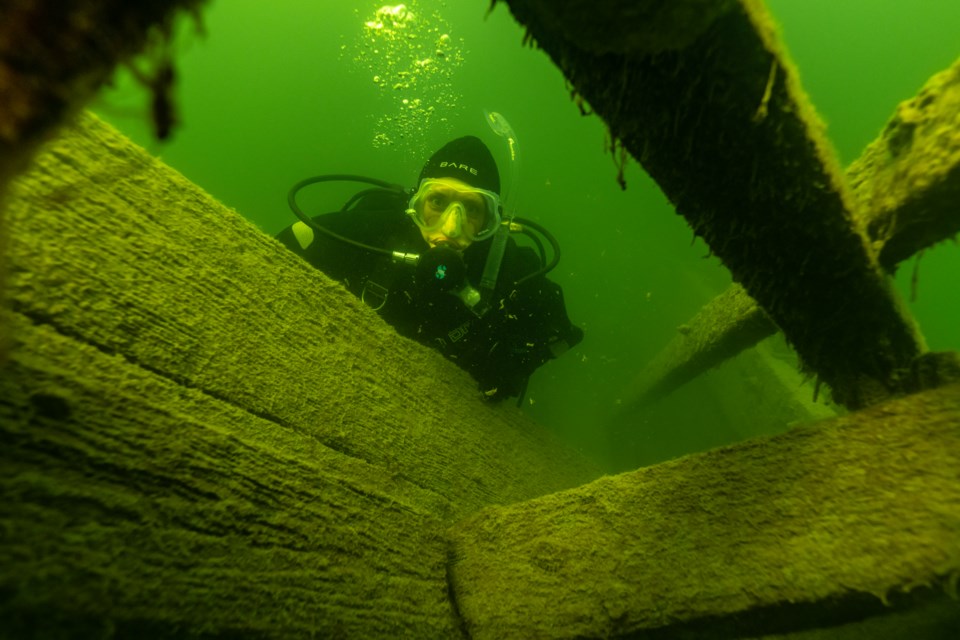Self-professed “aquaholic” Wally Peterson says there are a surprising number of divers in Thunder Bay.
Peterson is the owner of Thunder Country Diving, a local store on May Street that sells scuba diving equipment and offers diving lessons and certification. “The store is 50 years old this year,” he says. “And we average 60 students a year, so that’s 3,000 students.” Over the decades, there have been other places offering diving lessons, and a lot of people also take lessons outside of Thunder Bay.
Diving is “one of those things that’s on an awful lot of people’s bucket list,” the diver says. There are people who try diving in warmer waters when they’re on vacation, but there’s also a hardy bunch, the “adventure people,” who dive in the cold waters of Lake Superior. Some go diving seeking shipwrecks, which there are plenty of in the area.
Peterson himself started diving in 1976, when he was working as a lifeguard. He took a dive course and knew this was what he wanted to do, so he went to California for three months to get his instructor’s license. Back in town, he got hired at Thunder Country Diving as an instructor, and in 1983, bought the business and made it his own.
Thunder Country Diving offers classes for a variety of divers, from novice to advanced. Since the pandemic, all theory work is done online, and water work is semi-private, with only two students per instructor. You need your own boots, mask, snorkel and fins, but can rent the rest of the equipment.
Popular and accessible locations for diving include Silver Harbour and Little Trout Bay Conservation Areas, Oliver Lake and Silver Islet. “I like to dive in Lake Superior because there’s lots of shipwrecks there. Lots of history in that place,” Peterson says.
There are three shipwrecks near the Welcome Islands; the Robert Fryer, the Grey Oak and the Green River, and Thunder Country Diving regularly organizes outings to these sites. Peterson says there are really good dives north of Thunder Bay as well, such as the Gordon Gauthier, right across from the Silver Harbour Conservation Area.
Peterson has made diving his life. “It’s kind of an addiction,” he says. While most people dive from June to September when the water is warmer, he says there is no “real season” for diving. “Some of us even ice dive; we go out, use a chainsaw,” he says.
He has seen and found many wondrous things in the water over the years, such as clay pipes at the old silver mine at Silver Islet. He has travelled abroad to do exotic dives, going to WWII sites, an atomic bomb test site, and the Galapagos Islands. He has stared at the eyes of a mantis shrimp, considered to have the most complex eyes in the animal kingdom, and come across huge manta rays and whale sharks. “It all depends where you are, what you see in that spot,” he says. “Little stuff, huge stuff. That’s some of the adventure of diving.”
Around Northwestern Ontario, there’s plenty to see as well.
“Last year I was teaching at Silver Harbour; there’s a little beach area there and we were in about six feet of water and we had a school of minnows go by, which was like leaves on a tree, just a huge school of fish. Or you go in the fall when the whitefish are spawning, there are whitefish all over the place at night. Or go diving during the smelt run. Or the mouth of the river when the salmon are spawning,” he says.
“It’s a whole different way to appreciate nature. And it changes from week to week,” he explains. “You can go to the same place and see different things. It’s constant change; the sites are never the same.”



